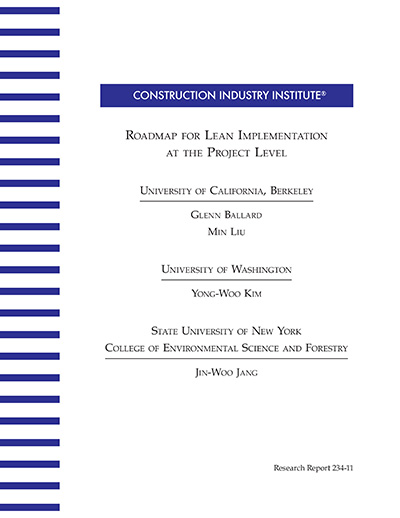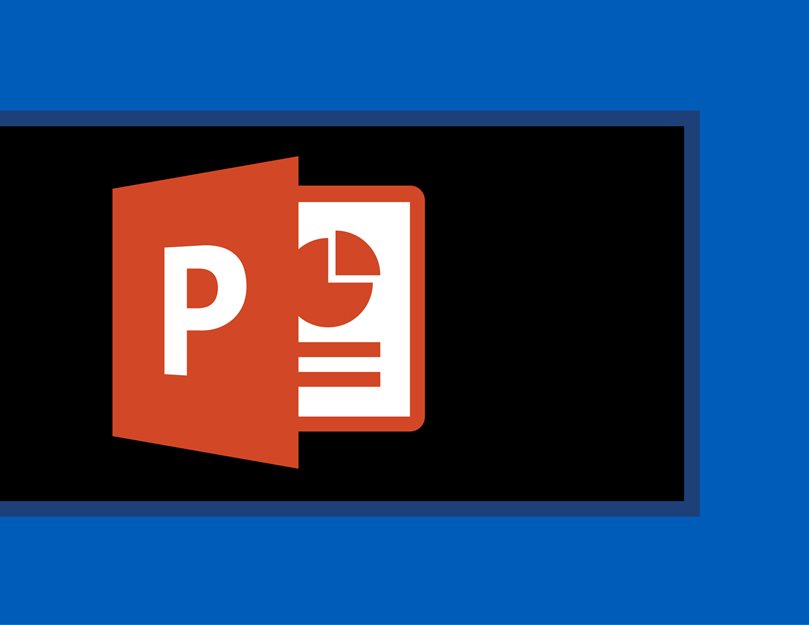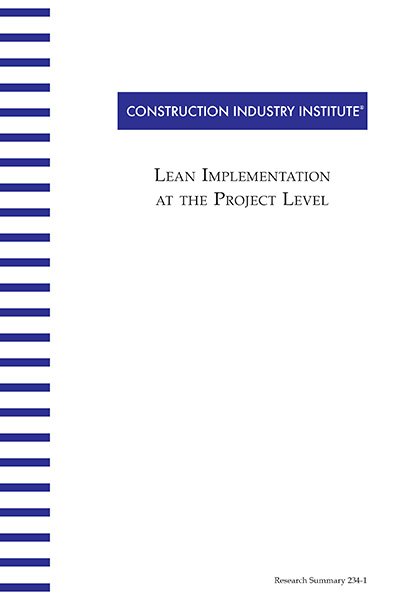
Roadmap for Lean Implementation at the Project Level
CII Research Team 234 was launched to understand secrets of success in applying lean at the project level and to translate this understanding into an implementation road map.
What is “Lean”?
Lean is a fundamental business philosophy—one that is most effective when shared throughout the value stream. “Base your management decisions on a long-term philosophy, even at the expense of short-term financial goals” and “Grow leaders who thoroughly understand the work, live the philosophy, and teach it to others” are 2 of the 14 principles listed in The Toyota Way (Liker, 2004).
As a business philosophy, lean is naturally applied at the enterprise level, but can also be applied within business divisions, on projects, or even applied to specific processes. The focus of this research is implementation of lean on projects. To the extent that we treat enterprises or processes, we do so within the context of projects.
Roadmap for Lean Implementation on Capital Projects
Your power to do the following will vary with position and circumstance, but to the extent you can, you should:
- Select partners or suppliers who are willing and able to adopt lean project delivery
- Structure the project organization to engage downstream players in upstream processes and vice-versa, and to allow resources (e.g., money, float, equipment, people) to move across organizational boundaries in pursuit of the best project-level returns
- Encourage thoughtful experimentation and celebrate breakdowns (plan failures, product defects) as opportunities for learning rather than occasions for punishing the guilty
- Practice production control in accordance with lean principles such as making work flow predictable and using pull systems to avoid overproduction
- Do target costing: define and align project scope, budget and schedule to deliver customer value, while challenging previous best practice
- Practice set based design: make design decisions at the last responsible moment, with explicit generation of alternatives, and documented evaluation of those alternatives against stated criteria
- Build quality and safety into your projects by placing primary reliance on those doing the work of designing and making, by acting to prevent breakdowns, including use of pokayoke (error proofing) techniques, by detecting breakdowns at the point of occurrence, by taking immediate corrective action to minimize propagation, and by acting on root causes in order to prevent reoccurrence
Although some have more power than others to implement lean on projects, no one is a helpless victim of fate. Everyone can strive to become a lean enterprise. Everyone can pursue the lean ideal. Everyone can apply lean principles and methods to their own processes. Everyone can invite their customers, suppliers and partners to join them on the lean journey.
Stability – In projects, stability (the opposite of variability and unevenness) can be provided by making load predictable so that capacity can better be matched to it. This stability is achieved by making work flow predictable in projects.
Handoffs – It is necessary to specify the handoffs between specialists in project production systems. In a manufacturing facility, this can be done through layout of workstations and routing of materials, but such structures and routes change frequently in construction, so rapid redesign of the production system is a vital capability. Some theorists and practitioners believe that these redesigns are done best through collaborative team planning using a technique called reverse phase scheduling. (RR234-11, p. 13)
RR234-11, Lean Implementation Roadmap
Provides general guidelines for starting your lean journey, that includes: (RR234-11, p. 136)
- Starting your lean journey – Lean is a journey, not a destination. A lean enterprise is in pursuit of the lean ideal.
- Guidelines for organizational change
- Implementing lean on projects
- Lean implementation by project phases
- Lean implementation issues by project role


